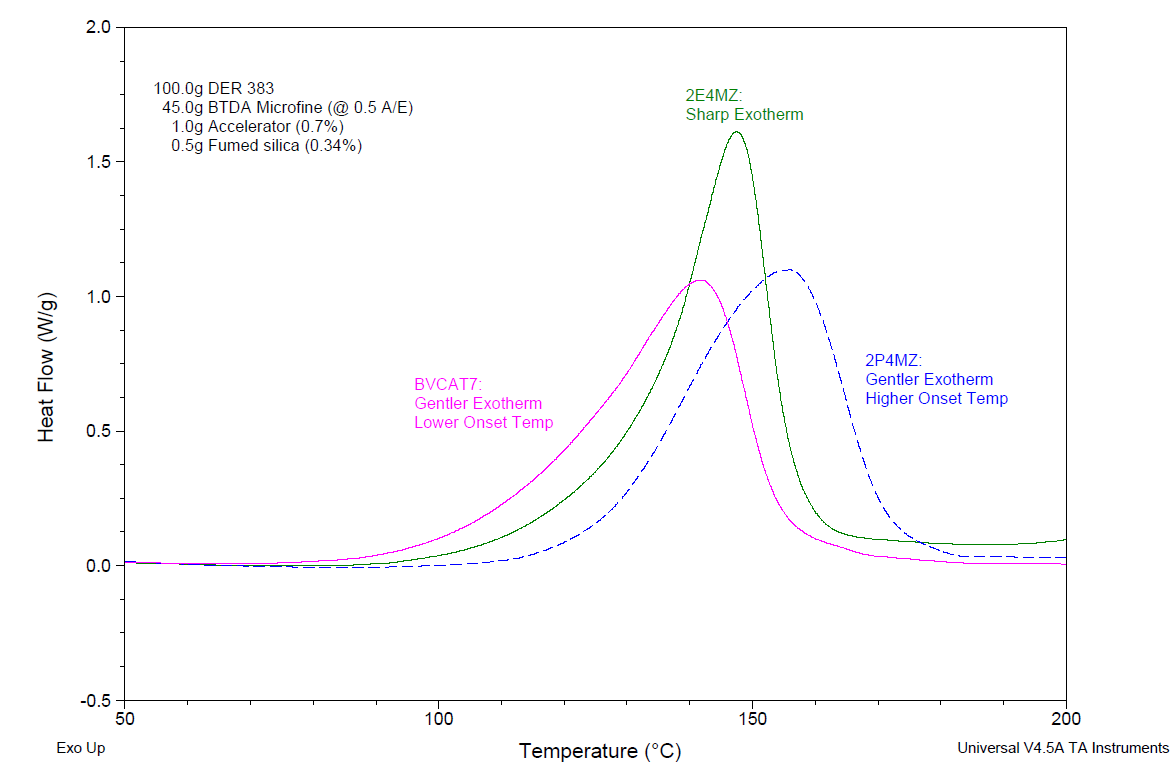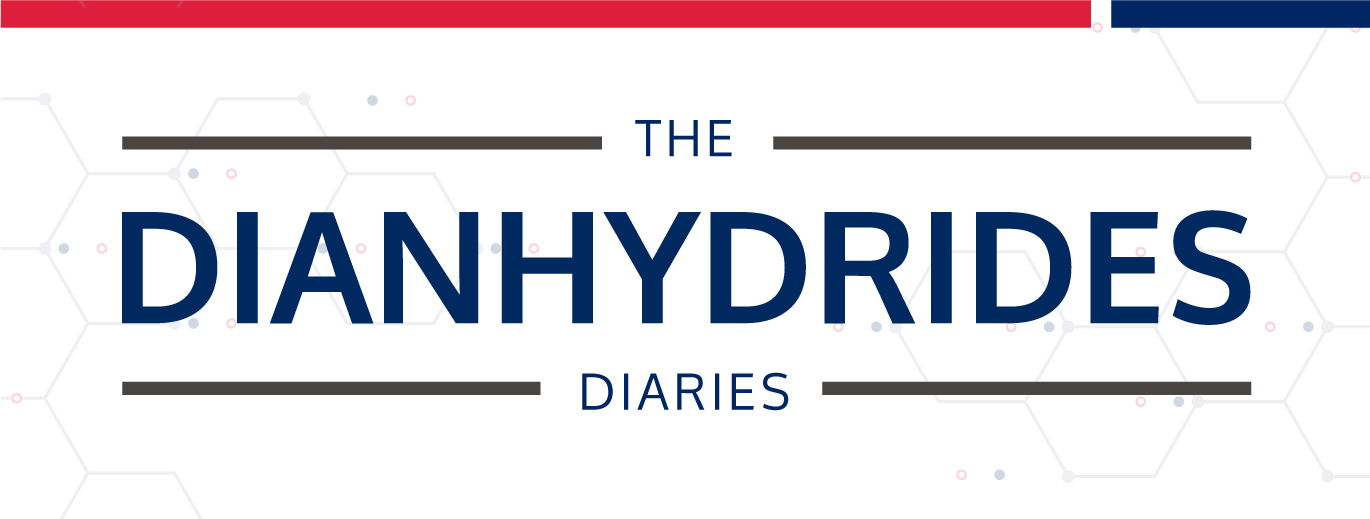Welcome to the third entry of The Dianhydrides Diaries, a bi-weekly series that will explore all the benefits of dianhydrides, along with the chemistry, applications, tips, and advice on how to gain a competitive edge with your next project.
Epoxy resins cured with dianhydrides serve high-end polymer applications such as composites, adhesives, powder coatings and molding compounds. The performance of the overall system certainly relies upon the main ingredients in it, e.g., resins and curatives. But some properties, especially cure behavior, depend significantly on one of the smallest ingredients in the formulation, the cure catalyst, also known as cure accelerator. This is equally true for epoxy formulations using either dianhydrides or their monoanhydride cousins.
This post highlights the control achievable in cure behavior simply through catalyst selection. Figure 1 presents DSC cure exotherm data, generated by heating unreacted formulation specimens from ambient to 300°C at 10°C/minute. The underlying epoxy-dianhydride formulation is described via the figures’ legend and this post’s footnotes.

Figure 1. Effects of different catalysts on DSC cure exotherm data. Formulations contained liquid epoxy resin and BTDA (benzophenone tetracarboxylic dianhydride). Uncured formulations were subjected to DSC heating ramps @ 10°C/min. Data from Mr. Nikola Bilic, Kansas Polymer Research Center, Pittsburg, KS. (Click here for larger image)
The plot for 2E4MZ, an imidazole catalyst shows a relatively sharp exotherm peak. Such cure behavior can be useful in applications where fast development of strength is preferred once the cure temperature is reached. An example will be high-temperature adhesives, which are applied and cured in thin films. However, such rapid curing can also lead to localized hot spots which may lead to degradation in the cured part and compromised performance. This will be a concern in thicker applications, e.g., in curing of high-performance composites. For such applications, gentler cure behavior such as those shown for 2P4MZ (imidazole) and BVCAT-7 (ammonium salt) catalysts may be more suitable. As the figure shows, their peak reaction rates are relatively mild, as indicated by their modest peak exotherms. Specifically for applications where such moderate exotherm profile is suitable, but the process requires a lower cure temperature, the catalyst BVCAT-7 can be selected. For example, certain mold materials in composite applications may be sensitive to temperature. The plot for BVCAT-7 points to a lower temperature for cure onset, and yet the overall shape of the exotherm curve is just like the curve for 2P4MZ. On the other hand, 2P4MZ may be more suitable in cases where high cure temperatures can be tolerated but the intricacy of the mold may demand slower fills for even warm resin mixes. In those cases, 2P4MZ’s higher temperature for cure activation can be a benefit as it reduces the risk of gelation during the filling process.
There are numerous catalyst types available for dianhydride based epoxy systems. If your formulation is close to meeting the challenges of your demanding application, a deeper understanding of catalyst behavior can be just the advantage you need for achieving success.
Footnotes:
- DER383 = D.E.R.TM 383 liquid epoxy resin, EEW 182g/eq.
- BTDA = JAYHAWK BTDA® Microfine.
- 2E4MZ = Imicure® 2E4MZ = 2 ethyl 4 methyl imidazole
- 2P4MZ = Curezol® 2P4MZ = 2 phenyl 4-methyl imidazole
- BVCAT-7 is a quaternary ammonium salt catalyst available from Broadview Technologies.
- BTDA is a trademark of Jayhawk Fine Chemicals Corporation.
- D.E.R. is a trademark of Olin Corporation.
- Imicure and Curezol are trademarks of Evonik Corporation.


